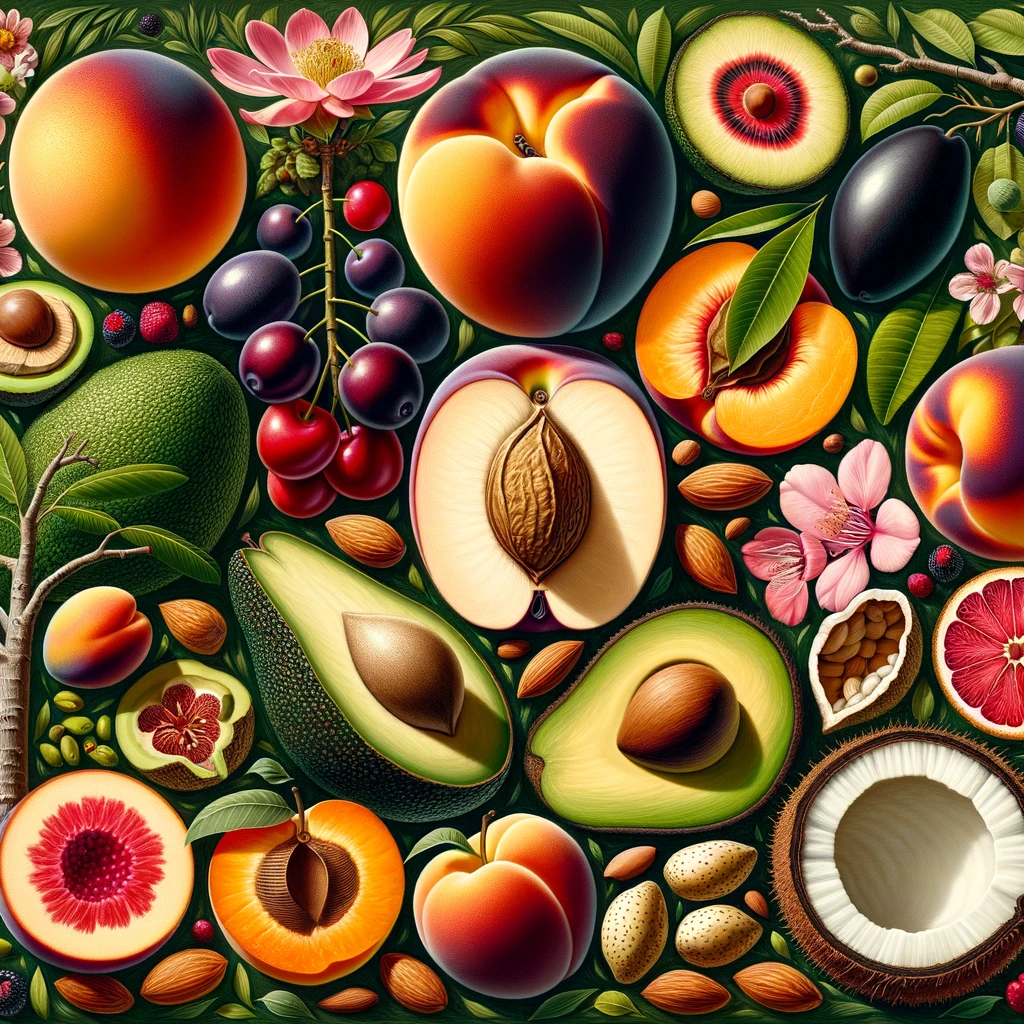The Drupe: Nature's Three-Layered Bounty
When the summer sun casts a warm glow on orchards, it's a sign that nature's sweet treasures, drupes, are ready for harvest. The term 'drupe' may sound foreign, yet the fruits it represents are anything but. What sets drupes apart from other fruits, and why is their structure so unique? Let's delve into the fascinating anatomy of drupes and unveil the genius of nature encapsulated in these fruits.
The Triple-Layered Architecture:
At the heart of a drupe's appeal is its unique three-layered structure:
Exocarp (Outer Layer): The exocarp is the outer skin of the drupe, which may be smooth like a cherry or fuzzy like a peach. This layer is often rich in color, enticing animals and humans alike to take a bite.
Mesocarp (Middle Layer): Just beneath the skin lies the mesocarp, the fleshy, juicy part of the fruit that makes drupes a beloved summer treat. This layer is where we find the sweet or tart flavors characteristic of different drupe varieties.
Endocarp (Inner Layer): Encased within the mesocarp is the endocarp, a hard shell or stone that protects the seed waiting to sprout into a new plant. When you crack open an apricot pit or an almond shell, you navigate through the endocarp to reach the seed inside.
Drupes include common ones like apricots, peaches, and olives and less common ones like sloe and ivy. Coconuts are unique drupes with fibrous mesocarp, floating long distances for dispersal. Some drupes, like dates, and species like Jubaea chilensis, form large clusters, showcasing the diverse manifestations of drupes in the plant kingdom.
Drupes have long been entwined with human civilization, providing sustenance, wealth, and religious symbolism. Dates, coconuts, olives, almonds, cherries, peaches, and plums, each with its unique historical narrative, have traversed continents, seeding cultures with flavors and traditions that continue to flourish. Their journey unveils a fascinating interplay of ancient trade, agricultural evolution, and the perennial human endeavor to cultivate nature's bounty.
The world of drupes combines botanical wonder, culinary versatility, and nutritional richness. As we relish the sweet nectar from a ripe plum or savor the crunch of a fresh almond, we are partaking in a natural marvel nurtured by a protective shell and brought to fruition under the gentle caress of the sun. So, the next time you enjoy a drupe, take a moment to appreciate the intricate design and the journey of nature's bounties from blossom to table.

